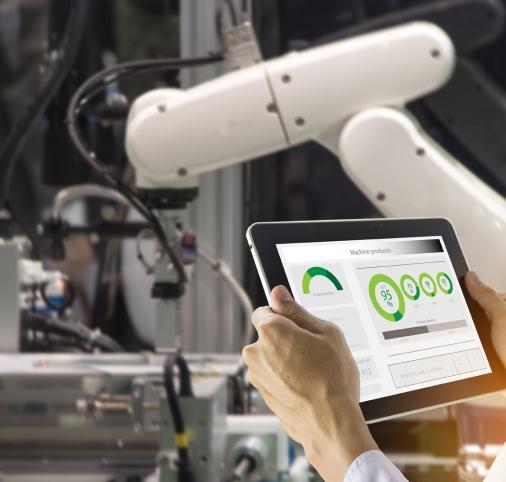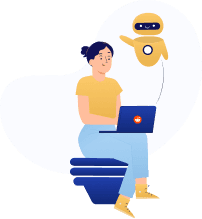What Are Inference Engines in Artificial Intelligence?
Learn how inference engines in AI can emulate problem-solving by a human expert in a domain and ask DataOx how it can benefit your business.
Ask us to scrape the website and receive free data sample in XLSX, CSV, JSON or Google Sheet in 3 days
Scraping is the our field of expertise: we completed more than 800 scraping projects (including protected resources)
Table of contents
Estimated reading time: 3 minutes
Introduction
Artificial intelligence is a cutting-edge technology widely used in a variety of spheres nowadays. To properly understand and use the data encoded in semantic web documents, AI requires a special component – an inference engine.
What is an Inference Engine in Artificial Intelligence?
Inference Engines in Artificial Intelligence is a system that acknowledges graphs or bases to figure out new facts rules and relationships applying the new rules. The inference engine can use the pattern of deductive learning in artificial intelligence, and then knowing that Rome is in Italy, conclude that any entity in Rome is in Italy.
It can also follow the way of inductive reasoning in artificial intelligence. A vivid example of it may be the fact that every technology company with more than a hundred employees tends to have a CTO, thus any enterprise meeting this criterion without a CTO must be missing a record. Initially, the inference engine in the expert system had to become a component that emulates problem-solving by a human expert in a certain domain.

Some AI inference engines are called reasoners, they are software apps deriving new facts, insights, logical conclusions, and associations from the information that already exists based on a certain model. Inference and inference rules allow adding new pieces of knowledge based on previously known data.
Key Methods Employed within Inference Engines in AI
There are two major methods that are utilized by inference engines to gather new knowledge:
- backward chaining
- forward chaining reasoning
Backward chaining in artificial intelligence begins with a hypotheses list and analyzes data backward to see if the data plugged into the rules match these hypotheses. Thus, the facts that support a hypothesis are highlighted.
Forward chaining begins with the data available, analyzes it, and infer new details and facts based on a specific rule.
Both approaches are based on deductive reasoning in artificial intelligence that if A implies that B is true and A is true, then B must also be true. Forward chaining in artificial intelligence can be demonstrated through an example of the rule like this:
Rule1: Cat(x) => Mammal(x)
We state that all cats are mammals, and then we can take every breed separately and a fact will be created. For instance, A Maine Coon is a mammal.
A backward chaining example in AI can be demonstrated through a reverse process, however, the inference engine should be aided by an interface for a human.Let’s look at the rule like above from the other side, going from the hypothesis that should be checked “A Maine Coon is a mammal”. To prove it, the backward chaining reasoning needs to highlight the assertion through inquiring a human if Maine Coon is a cat. In case the answer is positive, the hypothesis “a Maine Coon is a mammal” would be validated. In a rule-based inference engine, the simplest actions taken go through 3 stages: matching, selecting, and executing rules.
- Match rules are a process in which all the rules are found and triggered by the contents of a knowledge base.
- The select rule is an action discerning the order of the rules that should be applied.
- Execute rules is applying rules to the knowledge ере exists with the help of either forward or backward chaining.
Once the execute rules process is completed, the match rules procedure is restarted until all the opportunities for either forward or backward chaining deductions are exhausted.
Questions and Answers
What is an inference engine in AI?
Inference in AI is an engine that looks through the AI database and applies the existing logical rules to new objects and facts in order to create new facts, rules, and their relations.
What is forward and backward chaining in artificial intelligence?
Backward chaining in AI (goal-driven technique) starts with a hypotheses list and analyzes information backward to see if the data plugged into the rules match these hypotheses. On the contrary, forward chaining (data-driven) starts with the given information, analyzes it, and infers new details and facts based on a specific rule.
What are inference engine examples in AI?
The inference engine checks the database for rules and drives conclusions based on general logic. E.g. an AI database contains two statements “if it rains, the grass gets wet,” and “if the grass gets wet, the grass grows.” Interference engine can make the third statement, – “if it rains, the grass grows”, based on a general logical rule “if a=b and b=c, then a=c”.
Inference Engines in AI – Conclusion
Inference engines are mighty components of a knowledge-based system in artificial intelligence, however, any knowledge base needs data.
To get the necessary data for processing, you can scrape it from the relevant online sources yourself or order data delivery services. That’s where DataOx offers you a professional helping hand, schedule a free consultation with our expert, and discuss the opportunities.
Publishing date: Sun Apr 23 2023
Last update date: Tue Apr 18 2023




